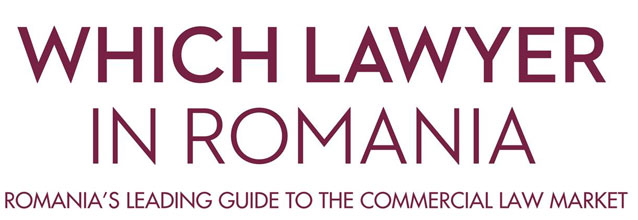
Author: Andra Cașu, Partner, Head of Direct Tax, EY Romania
If only 10 years ago, companies only had to prepare and send to the authorities a few tax returns on a regular basis, the complexity, and dynamics of the constantly evolving economic environment in recent years require significant changes in tax systems and, implicitly, in reporting systems, both national and cross-border.
As a member of the European Union, Romania continues to modernize and integrate its national tax legislation into the EU context. At the same time, fast-paced technology and digitization, reaching areas unimaginable in the past, are two more elements contributing to the complex picture of tax data, information, and reporting that companies have to provide today.
It is becoming necessary and imperative to make data transparent, to use it accurately, so that any incorrect practices in the tax area can be successfully combated by state and European authorities. Cross-border exchange of information and effective administrative cooperation are the cornerstones of this approach.
Legislative harmonization (by integrating European regulations on administrative cooperation and the compulsory exchange of tax information between Member States) therefore means digitization, the adaptation of national legislation to European directives, and joint tax controls.
This is a trend that will continue to develop because we are also talking about the internationalization of operations in a digital context and strong connections between tax authorities and systems between countries. For example, the cross-border dimension of services offered through the use of platform operators has created a complex environment in which enforcement and compliance with tax rules are becoming increasingly difficult.
How the exchange of information for transactions carried out via digital platforms works
Member States' tax administrations need to have sufficient information to correctly assess and control the gross income generated in their country from trading activities carried out via digital platforms. As a large part of the income or taxable amounts made by sellers on digital platforms circulates across borders, reporting information on the relevant activity generates positive results when that information is also communicated to Member States that are eligible to tax the income made.
This is the meaning and purpose of the new DAC7 Directive introduced in 2023, which aims at taxing transactions on digital platforms. Automatic exchange of information between tax authorities is therefore essential to correctly assess the taxes due on transactions carried out via digital platforms.
The operators of online platforms are much better able to collect and verify the necessary information on all sellers using a particular digital platform and conducting business on it.
The reporting obligation covers both cross-border and non-cross-border activities in order to ensure the effectiveness of the reporting rules, the proper functioning of the internal market, a level playing field, and the principle of non-discrimination. The reporting obligation also applies regardless of the legal form of the seller. The reporting of business activities includes the letting of immovable property, the provision of personal services, the sale of goods, and the hiring of any means of transport.
The authorities of the European Union state where the reporting by the platform operator has been made will communicate by automatic exchange the information to the authority of the Member State of residence of the reporting vendor and, if the vendor provides rental services of immovable property, to the authority of the Member State where the immovable property is located.
The information reported includes a range of data for the platform operator as well as for the seller such as name/first name, address, tax identification number, date of birth, financial account number, quarterly income and the number of activities carried out, other fees, etc.
In the case of immovable property, information such as the address of the property, quarterly income and number of activities performed, number of days of rental, and type of immovable property is also provided. The communication shall be made on a specific form, from 2023 onwards, within two months of the end of the reporting year. On the other hand, due diligence procedures for data collection are also introduced, which shows a similarity with other European directives in the field of administrative cooperation and compulsory automatic exchange of information in the field of taxation (such as in particular the CAD2 Directive on the Common Reporting Standard).
Joint controls - the best way to cooperate in the fight against evasion
At present, in the above-mentioned context of increased transparency, digitization and cross-border exchange of information, the legislation also contains strengthened provisions on the presence of officials of one Member State in the territory of another Member State and on simultaneous controls by two or more Member States in order to ensure the effective application of tax rules.
When officials of one Member State are present in the territory of another Member State during an administrative inquiry or participate in an administrative inquiry by means of electronic communication, they should comply with specific procedural rules for directly interviewing individuals and examining records. A Member State intending to carry out simultaneous control should be obliged to inform the other Member States concerned of its intention.
Joint controls should be an additional tool for administrative cooperation in the field of taxation between Member States. This instrument will complement the existing framework which provides for the possibility of officials from another Member State being present in administrative offices, participating in administrative inquiries and simultaneous controls.
This would be a type of administrative inquiry carried out jointly by the competent authorities of two or more Member States in relation to one or more persons who are of common or complementary interest to the competent authorities of those Member States.
In Romania, provisions have already been introduced in the Tax Procedure Code on joint controls and it is expected to become more detailed in practice in the future.
These are just two examples of the recent trend of legislative harmonization in the field of taxation at the European level, with an impact also in Romania. No doubt we expect this approach to be continuous and to include other aspects (such as extending the exchange of information on e-currency and crypto assets). It is a dynamic context that includes - as mentioned above - elements aimed at improving the ability of Member States to detect and counter fraud, tax evasion, and tax avoidance.
Clearly, Romanian taxpayers need to keep abreast of legislative developments and embrace the idea of permanent dynamics, which will certainly transform the tax landscape continuously in the future.



 July 03, 2023 10:55
July 03, 2023 10:55 










